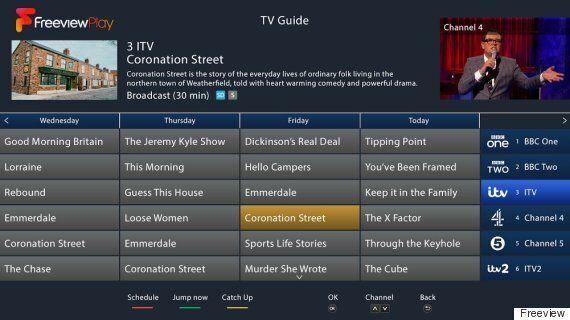Since its inception, television has been a unifying social force, bringing family, friends and different groups of people together. Even watching television on your own connects you to the multitudes of others watching the same thing across the globe.
TV has come a long way: from black-and-white to colour, from a rare treat accessible to few to a household staple for everyone, from standard definition to tomorrow's ultra-HD screens.
Views on TV audiences have also changed over time. While theorists once believed TV viewers were passive, zombie-like figures transfixed in front of their televisions, numerous studies have proven that TV audiences are engaged, active and critical of the programmes they watch.

In the past several years, we've seen a dramatic shift that's placed viewers in control of their own scheduling. There’s also more choice than ever before when it comes to accessing favourite programmes and watching them when and where they like.
“There are two simultaneous trends emerging when it comes to our TV watching habits, and they’re two opposite trends, which is interesting,” says Professor Sonia Livingstone OBE, a full professor in the Department of Media and Communications at the London School of Economics.
“One: we’re watching TV on our laptops, tablets and phones, wherever and on whatever.
"And two, somewhat paradoxically, we’re seeing a growth in the size of the screen in the living room. People talk about how everyone is watching TV on a 'small screen,' but there’s also a new viewing growing up around this enormous screen, as well as the more individualised viewing.”
SEE ALSO:

Now, we watch shows wherever we want, whether it’s relaxing in the bath with Corrie characters, catching up with a favourite drama on our phone during a morning commute or settling down in the sitting room every week to enjoy GBBO, gathered around the biggest – and best – screen in the house. Thanks to the latest in wearable tech, our most beloved television content has become a coveted accessory, accessible with a swipe on our watch.
Subscription-free services like Freeview Play have also given us more options than ever before, with over 60 TV channels, 12 HD channels and over 25 radio stations a remote click away, while Netflix and Amazon Prime give us the opportunity to watch shows we missed the first time around – in one sitting, if we so desire! – while simultaneously introducing us to new and original programming.
“We keep fearing that people won’t talk to each other anymore,” says Professor Livingstone. “There’s the choice to watch separately and the choice to come together, whether it’s binge viewing or the greater choice of programmes than ever before.”
All of this choice has had a positive impact on TV consumers, according to Professor Livingstone.
“Most of the evidence is that people are feeling empowered and delighted. There’s been an enormous welcome from people about the joys of having so much control and more choice than ever before.”
People are also prepared to pay to improve their television watching experience, whether that’s spending on bigger HD screens or subscription services.
While scheduling is fairly unimportant for younger generations, the middle-aged and young elderly population that remembers how television used to be is growing, so scheduling continues to play an important role for them.
For those in younger generations, the definition of what TV is – a five minute clip of a beauty vlogger’s latest haul on YouTube or a critically respected docudrama – calls into question what TV viewing really means these days.
“People have been saying for a while that scheduling is dead, but there’s no getting rid of schedule for the 40s or 50-pluses who absolutely adhere to traditions of what to watch and when,” says Professor Livingstone.
Rapidly emerging trends, like the increase in individual TV consumption across new tech and the importance of the living room big screen as the centrepoint of family life, ensure that the landscape of television scheduling is in constant flux and the future of television remains uncertain.
One thing we know? We'll still be watching.